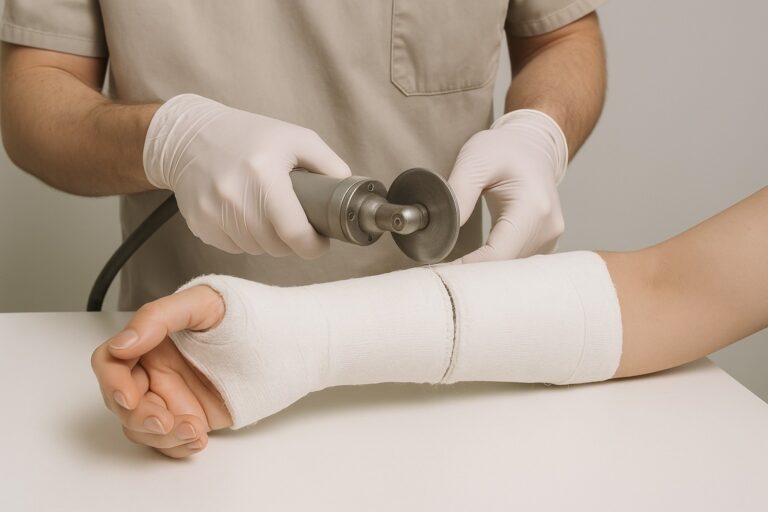Regular exercise has many health benefits but when the body is put under load (e.g. by lifting weights, yoga poses or Pilates exercises) there is a risk of injury. The following are ideas for reducing stress on the wrist while still staying active:
Warm Up. Always warm up before working out to ensure the muscles and tendons are warm and ready to work. Warming up and stretching becomes even more important with age, as the tissues (muscle, tendons and ligaments) become less flexible and less resilient the older we get.
Wrist Flexibility. A lack of flexibility can put undue strain on the surrounding ligaments, muscles and joints. If an exercise requires the wrist to bend to around 90 degrees (e.g. bench press and push-ups), gently stretch the wrists into the position required before adding load.
Strong Wrists. Strong wrists are more stable during weight lifting and weight-bearing exercise. A strong grip will also allow a more secure hold of the weight. Hand grips, resistance bands or light weights can be used to strengthen the muscles of the forearm.
Using Stable Positions. Keeping the wrist in neutral alignment reduces stress on the wrist when gripping. Performing push-ups with the wrist in neutral (i.e. fist push-ups) reduces the strain on the small ligaments of the wrist. Stability can also be added to the wrist by slightly arching the hand when in a weight bearing position.
Wrist Support. Wrist straps can assist by securing the grasp of heavy barbells. Wrist braces or wraps can restrict painful motion and provide additional support.
Rest. Allow adequate recovery by resting between sets and alternating upper body with lower body exercise.
Exercises should not cause more wrist pain! If you are recovering from a wrist injury listen to your body and make the necessary adjustments so that your wrists remain comfortable during exercise. If your wrist pain fails to resolve or worsens, seek professional help and consult your hand therapist for advice.


